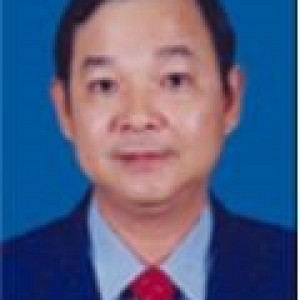Search Papers
5 papers
OVERVIEW OF SUBMERGED CULTURE AND THE BIOLOGICAL ACTIVITIES OF MEDICINAL MUSHROOM SPECIES
Nguyen Thi Ngoc Nhi, Dang Thanh Trung
Submerged cultivation of medicinal mushrooms is receiving increasing attention and is considered an effective alternative to traditional substrate cultivation methods for producing fungal mycelial biomass and bioactive metabolites with diverse applications. This method allows for the control of culture environment conditions, enabling more efficient synthesis of bioactive compounds such as polysaccharides, triterpenoids, cordycepin, polyphenols, etc. Furthermore, the bioactivity of these compounds, including antioxidant, anticancer, antibacterial, and immunomodulatory effects, further emphasizes the potential of producing medicinal mushroom biomass by submerged cultivation in the pharmaceutical and functional food industries. Submerged cultivation is considered a promising alternative to traditional mushroom fruiting body cultivation because it offers better control over culture conditions and product quality, as well as shorter cultivation times. Submerged fungal cultivation has significant industrial potential; however, there are still challenges in optimizing production yield and scaling up the process for industrial application. The successful application of this method on a commercial scale depends on increasing product yield and developing new production systems to address the issues related to submerged mushroom cultivation techniques. Although many researchers are making efforts to produce bioactive metabolites from fungi, the physiological and technical aspects of submerged cultivation still require extensive and long-term research.
OVERVIEW OF MORPHOLOGY, DISTRIBUTION, CHEMICAL COMPOSITION, BIOLOGICAL ACTIVITIES AND CULTURE MEDIUM OF Xylaria nigripes
Nguyen Thi Ngoc Nhi, Tran Minh Trung
Xylaria nigripes is a rare medicinal mushroom in the Xylariaceae family, which has long been used in traditional medicine to aid in treating conditions such as insomnia, neurasthenia, and inflammation. This fungus usually grows in an environment characterized by termite nests. Recent studies have shown that X. nigripes contains many valuable biological compounds such as polysaccharides, nucleosides, and sterols, which provide important biological effects, such as antioxidants, liver protection, immune system regulation, and diabetes treatment. In addition to pharmacological potential, many research works have focused on developing X. nigripes biomass kernel techniques under artificial culture conditions, in order to optimize growth and accumulation of active ingredients. These results not only contribute to clarifying the application potential of this mushroom in the pharmaceutical field but also create a scientific foundation for the sustainable exploitation of this rare medicinal resource.
Mango leaves (Mangifera indica) are widely used in traditional medicine and have gained scientific attention for their broad biological activities. Rich in bioactive compounds like mangiferin, flavonoids, phenolic acids, and terpenoids, mango leaves exhibit antioxidant, anti-inflammatory, anti-diabetic, antihypertensive, antimicrobial, gastroprotective hepatoprotective, neuroprotective and other bioactivities. These activities are linked to their ability to neutralize free radicals, modulate signaling pathways, and inhibit pathogenic microorganisms. Mango leaf extracts show promise in managing metabolic disorders, skin conditions, and age-related damage. Despite promising preclinical results, further clinical studies are needed to validate their therapeutic potential and safety in humans.
INHIBITORY ACTIVITY AGAINST ALLERGIC RESPONSES AND PHARMACEUTICAL PROPERTIES OF MEMBERS OF PHYLLANTHUS GENUS
Dai Hung Ngo
Phyllanthus (Euphorbiaceae) is widely distributed in tropical and subtropical areas, including Vietnam, where it is considered a valuable medicinal herb. Numerous bioactive compounds from Phyllanthus species have been identified, demonstrating pharmacological effects such as antiallergic, anti-inflammatory, antioxidant, antidiabetic, anticancer, antiviral, antibacterial, antimalarial, and wound healing activities. This review provides a comprehensive summary of Phyllanthus genus and its pharmaceutical properties, emphasizing the methodologies used for bioactive compound extraction and evaluation, as well as their clinical relevance.
Exploring phenolic contents, antioxidant and in vitro anti-inflammatory activities of Ficus hispida L.f. leaves
Vu Cong Danh
Ficus hispida L.f. (FH) is among the widely cultivated tree species in Asian regions. The aim of this work was to determine phenolic and flavonoid contents, antioxidant, in vitro anti-inflammatory activities of FH extracts prepared with methanol (ME), ethanol (ET) and ethyl acetate (EA). The extract obtained from ethyl acetate contained the highest total phenolic and flavonoid contents (92.75 +/- 5.14 mg GAE/g and 5.67 +/- 0.65 mg QE/g), followed by ME and ET. The capacity to scavenge ABTS free radical of the extracts followed the order: EA > ME > ET while their DPPH activity differed insignificantly. The inhibitory effect of EA and ME (IC¬50 = 362.84 +/- 29.05 and 386.95 +/- 11.10 ug/mL, respectively) were higher than that of ET. Correlation analysis showed a high positive correlation between total phenolic content and ABTS activity. The findings of the study would be useful for development of new nature-derived agents for prevention and treatment of diseases.
Publication Information
Publisher
Thu Dau Mot University, Viet Nam
Editor-in-Chief

Assoc. Prof. Nguyen Van Hiep
Thu Dau Mot University
Thu Dau Mot University
Editorial Board

Assoc. Prof. Le Tuan Anh
Thu Dau Mot University
Thu Dau Mot University

PhD. Nguyen Quoc Cuong
Thu Dau Mot University
Thu Dau Mot University

PhD. Doan Ngoc Xuan
Thu Dau Mot University
Thu Dau Mot University

PhD. Nguyen Khoa Truong An
Thu Dau Mot University
Thu Dau Mot University

Assoc. Prof. Nguyen Thanh Binh
Thu Dau Mot University
Thu Dau Mot University

PhD. Le Thi Thuy Dung
Thu Dau Mot University
Thu Dau Mot University

PhD. Ngo Hong Diep
Thu Dau Mot University
Thu Dau Mot University

PhD. Nguyen Duc Dat Duc
Ho Chi Minh City University of Industry and Trade
Ho Chi Minh City University of Industry and Trade

Assoc. Prof. Nguyen Van Duc
Animal Husbandry Association of Vietnam
Animal Husbandry Association of Vietnam

PhD. Nguyen Thi Nhat Hang
Department of Education and Training of Binh Duong Province
Department of Education and Training of Binh Duong Province

PhD. Nguyen Thi Cam Le
Vietnam Aviation Academy
Vietnam Aviation Academy

PhD. Trần Hạnh Minh Phương
Thu Dau Mot University
Thu Dau Mot University

M.A. Pham Van Thinh
Thu Dau Mot University
Thu Dau Mot University

PhD. Nguyen Thi Lien Thuong
Thu Dau Mot University
Thu Dau Mot University

Prof. Le Quang Tri
Can Tho University
Can Tho University

Prof. Banh Quoc Tuan
Thu Dau Mot University
Thu Dau Mot University

